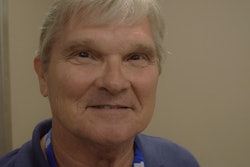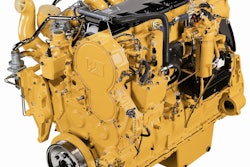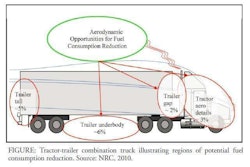
As owner-operators were reacting in various ways to news of President Obama’s announced plan to impose greater fuel-efficiency and emissions standards on post-2018 truck equipment, the image above came across the wall of Transportation Secretary Anthony Foxx’s Facebook page. While it may be accurate, it brought to the minds of some the old CSX railroad ad messages on PBS and NPR, which through some creative calculation proclaimed ad nauseum between news spots a few years back that “our trains can move a ton of freight 436 miles on just a single gallon of fuel.”
Wrote trucker Daniel McCreary, responding to the image on Facebook: “I hope this graphic doesn’t indicate the level of intellect that will go into this regulation. Four percent of vehicles, but what percent of miles? What percent of ton-miles? A 3,000-lb. vehicle that gets 30 mpg moves 1 ton 20 miles with 1 gallon of fuel. An 80,000 lb. truck that gets 6 mpg moves 1 ton 240 miles with 1 gallon of fuel, if my calculations are correct.”
It was clear, at least, that the administration was out to put a smiling face on the need for greater standards in heavy-duty vehicles. Some readers worried that it would only lead to further cost hikes — from purchase prices to maintenance. A commenter posting here at OverdriveOnline.com as MarsRiver pointed to difficulties he’s had recently with an engine from the 2007-09 round of emissions specs: “I’m guilty of owning one of those so-called ‘green’ tractors,” the commenter wrote, “an ’08 Peterbilt with the DPF system. I just put a serious amount of money into a bumper-to-bumper clean-up” of the system. Three weeks later, he said, it wouldn’t build up enough heat to clear out soot so “I’m in for more money during the slower period. I get a call from the mechanics at Caterpillar telling me I’m the only one they know of who kept the unit long enough to use the expected life term of this system.” The truck had 751,333 miles on it at the time, and the “replacement is going to run between $5-$8K. The parts alone I’m told will be $3-$4K. Real bad part is Cat got out since the specs were so tight and they didn’t see it as a viable alternative and lost too much of their own money on it before they pulled the plug.”
Among engine manufacturers weighing in on the announcement were Volvo and Cummins, who both issued press releases committing to work with the EPA and NHTSA to develop appropriate standards. Cummins’ road-tested 10.7 mpg Peterbilt SuperTruck was something of an exhibit in the President’s announcement.
The Owner-Operator Independent Drivers Association issued a word of caution. It’s reminiscent of what former Motor Carrier Safety Adivsory Committee chairman Dave Parker of Great West Casualty had to say about safety-equipment mandates at the Feb. 9-12 MCSAC meeting. As committee members built a laundry list of recommendations from varying stakeholders to present to Congress as potential action items for the next highway bill, Parker urged committee members not to go too far down the road of “dictating stuff on equipment that’s really easy [to implement] if I’ve got 10,000 trucks, but not if I have only two trucks. Future reauthorizations should keep in mind … how do you promulgate rules and regulations to the small truckers? As you start coming up with new technology, are you going to say, ‘If you’re not big enough to absorb that, you should get out of business?'”
OOIDA worried that “the standards will continue to push the cost of new trucks skyward, thereby forcing many small-business truckers and fleet owners to hold on to older trucks and put off buying new equipment as long as they can,” somewhat counterintuitive to the goal of short-term emissions reductions.










